By Richard Moore
Let’s return to 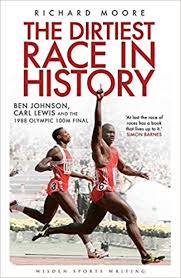 1988. That year was the middle of my seven long years in Manchester, the one that I spent doing physiology. Elsewhere on the planet, the internet inventor, Tim Berners-Lee, was flogging his plans for a world wide web; the climate scientist Jim Henson was issuing humanity with a famous warning; and little Estonia was in the grip of the Singing Revolution that climaxed in its break with Moscow. In Seoul, meanwhile, it was almost time for South Korea to host the 24th Olympics!
1988. That year was the middle of my seven long years in Manchester, the one that I spent doing physiology. Elsewhere on the planet, the internet inventor, Tim Berners-Lee, was flogging his plans for a world wide web; the climate scientist Jim Henson was issuing humanity with a famous warning; and little Estonia was in the grip of the Singing Revolution that climaxed in its break with Moscow. In Seoul, meanwhile, it was almost time for South Korea to host the 24th Olympics!
Seoul was a chance for the Olympic movement (as it always seems to be known) to make a fresh start. The previous Olympiads, in Moscow (1980) and Los Angeles (1984), had run into major trouble: first the USA had boycotted Moscow, then the Eastern Bloc had boycotted Los Angeles. It was tit for tat. But the only boycotters in 1988 were North Korea, Albania and Cuba and so the International Olympic Committee (IOC), under Juan Antonio Samaranch, was looking forward to a big success.
The IOC under Samaranch needed a big success. They had a rival now, the International Amateur Athletics Federation (IAAF), whose leader, the flamboyant Primo Nebiolo, had inaugurated the World Athletics Championships in Helsinki (1983) and then continued them in Rome (1987). These had proved a worthy alternative to the Olympics. They weren’t boycotted by anybody – and they weren’t bloated with Mickey Mouse events. They were a line of pure athletic cocaine.
In Manchester I was enlisted to several research projects. One looked at NMDA receptors (for glutamate and aspartate) and involved measuring action potentials in thin slices of mouse brain tissue. Another was about the applications of a novel alpha-adrenoceptor agonist (because you really want to know, right?) called clenbuterol that had been found to have anabolic (muscle building) powers. We tested clenbuterol on a colony of dystrophic mice. And it worked. Kind of. In later years, I was often proud to read about athletes messing with clenbuterol – seeing that our prodigal son had made the leap from disabled mouse to Olympian.
Athletes using drugs was a big issue coming into Seoul in 1988. And it wasn’t a new issue. By the 1970s the use of anabolic steroids was rife. Athletes were also using erythropoietin (to make more red blood cells) and human growth factor. But drug testing was a vexed business. The USA and its friends pretended that most drug abuse was in communist countries. But it wasn’t as simple as that. There was no testing outside of competitions. There was only erratic testing within competitions. Put it this way: If you were the organiser of a major athletics championship, the last thing you wanted was a load of positive tests. It’s like the mayor of a seaside town doesn’t want a shark attack. At the Los Angeles Olympics (1984), a safe was stolen and a whole batch of (probably positive) blood samples were lost. For every positive test, there were a hundred unproven suspicions. As I say, drug abuse was rife.
All this is addressed in Richard Moore’s fabulous sports book, The Dirtiest Race in History (published 2012) which focusses on the 100 metres showdown in Seoul between Ben Johnson and Carl Lewis, one of the most dramatic in the history of sport. Like Ali vs Frazier (1973), or Borg vs. McEnroe (1981), the memory of this contest invites the question, “Hey, where were you watching?”
Since you ask, I was watching in a council flat in the Hulme district of Manchester with my friends Gill and Errol at four o’clock in the morning. We’d been building up to this. It was late September, the new term barely started. Gill and Errol were rooting for Johnson – because he was born in Jamaica, because he was rough and ready, and because they always rooted for the same causes. I was with Lewis – because he ran with amazing grace, because he was handsome, articulate, because I disagreed with Gill and Errol. And the race? That mind-blowing race? Richard Moore describes the minutes afterward:
“Johnson’s run had been scintillating, no matter how it had been achieved. In some, a head versus heart struggle played out: the head said that everything about Johnson and his run invited suspicion, the heart thrilled at what it had just witnessed. It was the heart that governed the emotional response, which was the only response in the aftermath of the race. And it could be summed up in one, three letter exclamation: Wow!”
Question: Why did Ben Johnson take anabolic steroids?
Answer: Because his coach – the brilliant Charlie Francis in Toronto – happened to believe in them. If you didn’t use drugs, Francis argued, the other guy would, and he didn’t want his athletes at a disadvantage. The drugs gave you at most a 1% edge – but in a 100 meters race that was a whole meter!
Johnson, interviewed by Moore at age 50, said the only point of his taking steroids was to train harder. Steroids help you recover quickly. Johnson was a quiet man with a stutter who was adept at putting worries out his mind. The book is ambiguous about his psychology: Yes, he probably was putty in the hands of others. Yes, he surely also knew the score and didn’t sweat it over.
Question: Why wasn’t Carl Lewis more popular?
Answer: It’s often said that America loves winners, but Lewis won 4 gold medals at Los Angeles (100m, 200m, long jump, 100m relay) and was slaughtered in the American press. How so? Well, for one thing, Lewis came across as conceited. In Los Angeles he walked aloof during the opening ceremony, managed his press conferences slickly, and made no secret of wanting to transcend athletics – to become another Ali or OJ Simpson. Then there was his sexuality. The possibility that Lewis might be gay was hard for some folks. Another suggestion came from the English sportswriter Simon Barnes: that Lewis was simply the victim of racism – because he wouldn’t conform to type. Whenever there is an issue with a black athlete, Barnes argued, even when that athlete is very popular, you’ll find racism at the root of it.
There was racism too at the root of my rivalry with Errol – a rivalry that came to its own dramatic denouement just a few weeks later. But now it was 4-30 am and Johnson had blasted Lewis off the track and we were collecting ourselves with a spliff. ‘Raatid!’ exclaimed Errol, wiping his eloquent hand across his face as if to reset himself – and dropping his jaw to show his disbelief and admiration as we watched the replays. ‘Man-a-bullet!’ The cover of Moore’s book shows Johnson’s victory salute – two meters ahead of Lewis, breaking the world record – but inside is an equally telling picture: The start of the race, Johnson in mid-air as he jumps out his blocks, already going at full pelt.
Raatid! The temptation was to go down the stairwell to race across the estate. But instead we resumed next day – at the McDougall Centre – where Errol and I played our increasingly furious games of squash. Raatid!
It took about three days before Johnson’s positive drug test was announced – the biggest Olympic scandal ever – and for Johnson to be disqualified, his record annulled, and his plane to leave for Toronto.
He was of course in disgrace – but he faced it with dignity. His first concern was for his mother and his sister. “It’s okay,” he told them. “Everything’s alright. Nobody died.” In the centre of the frenzy he was amazingly calm.
Other athletes were not surprised that Johnson was on drugs. They’d noticed the rheumy eyes, the slight jaundice, the variable performances. Athletes had a pretty good idea of which athletes were on drugs. But there was surprise that Johnson got caught. The system usually excelled at not catching big fish.
And why did he test positive, anyway? Well that was down to a bit of desperation on Johnson’s part (he hadn’t been running well) and to lousy communication between his doctor and his trainer. Bottom line, he didn’t taper off the drugs soon enough and they were still in his system.
Yes, Johnson took the full weight of the shaming – particularly in Canada where he’d been a favourite son. But some of the public were less pious and more pragmatic than their leaders. They realized there was a pervasive issue in athletics – for which Johnson was paying the price. And in fact, Canada’s subsequent enquiry into the affair was a humane and level-headed exercise – one that identified the hypocrisies in the system and found in Johnson a polite, intelligent witness.
* * * * * * * * * *
The recipe for a sporting rivalry is two athletes, evenly matched but of quite contrasting temperaments, set in competition for several years – first one guy on top, then the other guy on top – and with a pinch of animosity thrown in. The two great rivalries of recent years have been low in animosity. Ronaldo vs. Messi (soccer) and Federer vs. Nadal (tennis) have both been rather courteous affairs. Boxing rivalries, on the other hand, – say Leonard vs. Duran – usually do have the animosity, but they tend to be short-lived. The classic rivalry in middle-distance running, between Coe and Ovett, had everything, including animosity, but the two protagonists avoided each other for too long. When they finally did consummate their rivalry, at the Moscow Olympics in 1980, each won the wrong race.
Johnson vs. Lewis had plenty animosity by the time it pulled into South Korea. Yup, the two guys definitely disliked each other. Moore doesn’t go into it enough, but the key things were that Lewis reckoned Johnson was using drugs, and therefore regarded him as a fraud; and that Johnson wasn’t getting the respect he felt he deserved from Lewis, and therefore came to hate him. By the time of the Seoul final their showdown had generated a huge amount of interest. And the 100 meters had become the alpha-spectacle it still is now: the undisputed King of the Olympics.
The weird thing about my rivalry with Errol was I didn’t see it coming. But when it did, the question that bubbled to the surface was the same one that irrigated the Lewis-Johnson affair: Who’s the fraud? Naturally I thought it was him and he thought it was me. But that was the busted that followed the bromance. In the beginning it was Huckleberry Finn type late boyhood friendship.
Because Errol at the start was fresh, hilarious and available – and that meant a lot to me in a town where I’d been so lonely. I’d return from a day of mouse experiments to find him lounging in the sun-lit, cockroach-infested flat, laughing with Gill, or singing along to the Hulme soundtrack – Yellowman, Tippa Irie, Eek-a-Mouse, Dennis Brown – or laying out his philosophical discoveries to the audience-of-the day. That audience might be some wide-eyed medical student that Gill had brought home, or a deejay from Manchester’s hip-hop scene, or an alternative healer with a special line in foot massages. The discoveries were invariably to do with power relations – Errol’s cosmology began with his youth as a black kid in 1970s Camberwell, and spiralled outwards, and as each new star came into view, he’d stretch out those eloquent hands and gasp – “Raatid!” – as Gill chuckled complaisantly on the sofa. That was alright by me, though I was never a fellow astronaut. And off we’d go to play squash, or push some weights, or score some dope, or pick up a chicken curry, or hit the PSV club where Moss Side folk danced and stretched and mingled in an atmosphere of happily stoned bonhomie. Yeah, it was fun. It was even meaningful.
A postcard from then: Errol and I go down to the laundrette that serves the block, each carrying a bag of laundry. As we walk in, without missing a step, Errol points at the young laundry lady – she must be 23 or so, the same as us – and bursts into song: “I know you want to leave me, but I refuse to let you go!” Errol has a beautiful, baritone voice. Being with him was living a musical – always on the brink of a song. The laundry lady is made up. I’m made up. There’s glamour here. Errol is an actor. But he no longer acts. Or rather his stage is the world now. There’s no limit.
Another postcard: I’m with Errol and David Rubin and we’re driving up Moss Lane East towards Rusholme. Errol is sermonising about blackness, and the ways of the world, and casting me and David as the white unenlightened. I’m wondering whether our ancestry gives us a get-out clause. David and I combined are 75% Hebrew, 12.5% Nigerian and 12.5% Irish. But David’s mind reaches for the heart of the matter. “Hey, Errol,” he asks, drawing on a spliff, “Is your sperm black?” And in saying this David so catches himself by surprise that he turns into his own audience – and soon he is laughing so much that tears are rolling down his face to join some snot from his nose – as a halo of cannabis smoke wobbles gently over his head. Whether it’s the image of jet-coloured jism sailing through the air, a pornographic, photographic negative of the real stuff of life, as it were, or whether it’s the peeling back of a section of Errol’s vanity, to reveal the inevitable being, is really hard to say. It’s both! And it’s really funny! ‘You white boys are sick!’ grumbles Errol, shaking his head with comic disapproval. But he’s laughing too, that’s what’s nice, he can’t help himself – for the moment.
And then it was autumn, and Ben Johnson was yesterday’s man, and I was a student at the Manchester Royal Infirmary. I probably felt as out of place as ever, but what was worse, an edge of discord had set into the flat. Was I a gooseberry to Gill and Errol? I don’t think it was that. But when he finally beat me at squash, Errol, being a prophet, turned it into a morality tale – a tale of his gathering virtue. And when he stole my red glittery shirt, I shouted at him, one brother shouting at another, and he didn’t like it. ‘No man, that’s fighting talk!’ he told me.
Errol took to calling me “a liberal” – a term he used in the negative sense but with certain extra meanings he’d invented. He was basing it on my demeanour and on some meetings with my South African family. I wasn’t too bothered. For one thing, he was right. I wasn’t the type to stick out my neck. But it encouraged me when Errol started applying the same disparaging label to other local guys – one of whom, Geoff, was a kind of hero to me. To be put in Geoff’s category made me feel proud. But I had questions for Errol too, some that I asked, like “Why don’t you ever clean the kitchen?’ and others that I didn’t ask, like ‘If you’re so free, how come you’re so kept?’ or ‘What do the sisters think of your white girlfriend?’
Things come to a head before Christmas. Errol and I are bickering about something and I notice he’s talking down to me.
‘What’s with the condescending tone?’ I ask.
He sticks out his chin and says, ‘I’m better than you!’
I’m genuinely nonplussed.
‘What do you mean? Better at squash? Better at 100 metres? Better at mouse experiments?’
‘No. Just better!’
He’s standing on the landing looking very smug.
But my pulse has slowed right down. There’s suddenly and absolutely not a single thing left to say.
Next day I call my friend Annabel in London. Her old council flat in Charles Barry Crescent, deep in the heart of Hulme, is lying vacant. ‘Sure, you can live there,’ she says, ‘I’d be pleased if you did – you can pick up the keys from Eric.’ And that’s how easy it was to get a flat in central Manchester in 1988. And boy was I grateful. I took all my stuff – the squash racket, the stethoscope, the poster of the liberation of Milan in 1945 – and piled it into the Mini Metro and transported it down the road into the concrete bunker that was my snug new home. Raatid!
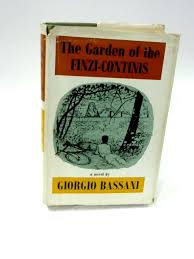 It’s the last night of January, 2016. I’m at The Lamb with Vieri and Micòl his older daughter.
It’s the last night of January, 2016. I’m at The Lamb with Vieri and Micòl his older daughter.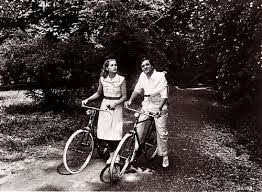
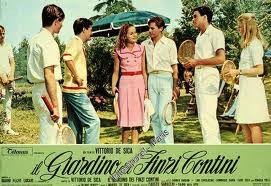 His work as a writer was a remembrance of the Ferrara community he’d come from. The Garden of the Finzi-Continis was his famous book and a movie version of it (Dir. Vittorio de Sica) won the 1970 academy award for Best International Film. I can definitely recall the hype when that movie was first screened on British TV.
His work as a writer was a remembrance of the Ferrara community he’d come from. The Garden of the Finzi-Continis was his famous book and a movie version of it (Dir. Vittorio de Sica) won the 1970 academy award for Best International Film. I can definitely recall the hype when that movie was first screened on British TV. illustrations by Emmanuel Cerisier, photo research by Ruth King and history consultancy from Professor O.A. Westhad. It’s a group effort. A successful one!
illustrations by Emmanuel Cerisier, photo research by Ruth King and history consultancy from Professor O.A. Westhad. It’s a group effort. A successful one!

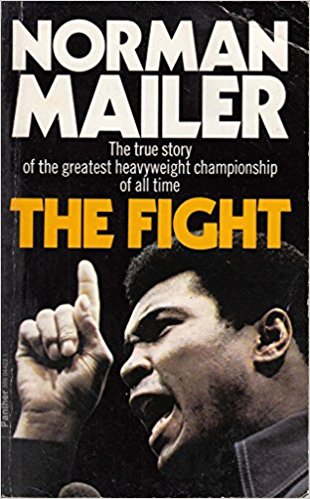 Norman Mailer
Norman Mailer Maya Jasanoff
Maya Jasanoff Muriel Spark
Muriel Spark Edited by Amy Stewart
Edited by Amy Stewart Frans de Waal
Frans de Waal
 It’s Sasha’s cousin Suzy who recommends The Endless Steppe. ‘We enjoyed it a lot!’ she tells us, arms round her 12-year-old twin sons. Suzy and her husband, George, an artist, and their boys, live on the picturesque curve of the Regents Park Road, a neighborhood that especially at night looks like a film-set. It’s the quaint London of movies like The Lady in the Van or Paddington Bear 2. I stroll down with the girls on a lovely day, during our summer in Belsize Park, and everybody gets on well. Suzy is warm, quick and zany, and I’d forgotten how funny. What books has she read with her kids?
It’s Sasha’s cousin Suzy who recommends The Endless Steppe. ‘We enjoyed it a lot!’ she tells us, arms round her 12-year-old twin sons. Suzy and her husband, George, an artist, and their boys, live on the picturesque curve of the Regents Park Road, a neighborhood that especially at night looks like a film-set. It’s the quaint London of movies like The Lady in the Van or Paddington Bear 2. I stroll down with the girls on a lovely day, during our summer in Belsize Park, and everybody gets on well. Suzy is warm, quick and zany, and I’d forgotten how funny. What books has she read with her kids?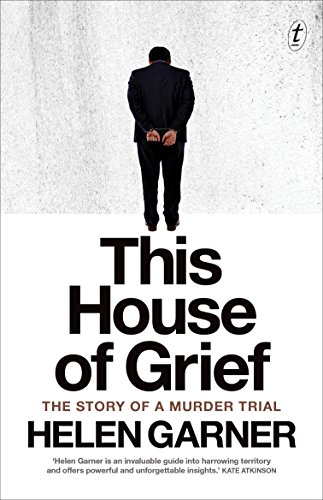 I’d already read a novel by Helen Garner, The Spare Room, which was excellent, so I was interested also to read this non-fiction book, The House of Grief, about a criminal trial that took place in Melbourne, Australia.
I’d already read a novel by Helen Garner, The Spare Room, which was excellent, so I was interested also to read this non-fiction book, The House of Grief, about a criminal trial that took place in Melbourne, Australia.